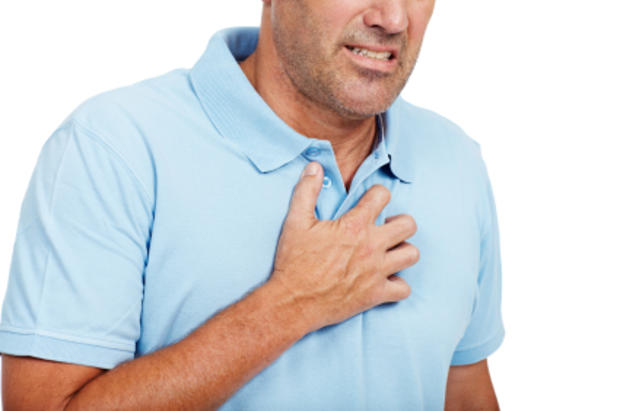Sudden Cardiac Arrest: What you don't Know CAN Hurt you!
By, Beth Israel Deaconess Medical Center Correspondent
Every day in the US, more than 1,000 people go into cardiac arrest. Only about 10 percent of them survive. Sudden cardiac arrest (SCA) is the #1 killer of adults over the age of 40, both here and abroad. It is two to three times more likely to occur in men than in women.
What's the difference between SCA and a heart attack?
"A heart attack is essentially a plumbing problem," explains Dr. Mark Josephson, an internationally recognized expert in SCA and Chief Emeritus of Cardiovascular Medicine at the CardioVascular Institute at BIDMC. "A heart attack occurs when a clot occludes or clogs the blood vessels ('pipes') that carry blood to your heart, and the muscle dies."
SCA, on the other hand, is an electrical problem. "The rate and rhythm of your heartbeat is controlled by the heart's electrical system," says Dr. Josephson. "When this system malfunctions, primarily because of prior disease, you can develop a rapid heartbeat that disrupts cardiac function, resulting in death."
The first sign of SCA is usually fainting, with the absence of a pulse or heartbeat. Shortly before loss of consciousness, some people experience dizziness, light-headedness, shortness of breath or racing heartbeat.
Some facts about SCA
- In the US, between 150,000 and 425,000 people suffer SCA every year, not related to an accident or trauma, and not while in the hospital. (The wide range reflects differences in how the diagnosis is made.)
- About 8,800 of those people are under 18 years old.
- Only about 10% of people who suffer SCA outside a hospital survive; only about 5% of those under age 18 survive.
- Your chances of survival fall by 10% for each minute you're in cardiac arrest.
- One quarter of people who are treated by EMS personnel for SCA had no warning signs or symptoms beforehand.
Are you at risk
Coronary heart disease (CHD) is the biggest risk factor for SCA, affecting about 75 percent of the victims. Many victims have had a prior heart attack without knowing so that it goes undetected until after the incident. Having had a heart attack especially increases your risk of SCA in the following six months.
SCA generally hits people over the age of 40. It's rare among children and young adults. And when it occurs, it's usually due to underlying heart disease.
A study published in July of this year found that African American men and women had twice the risk of SCA compared to their white counterparts. Not only that, their survival rate for an out-of-hospital cardiac arrest was only one-third that of Caucasians. The incidence of SCA is also relatively low for Hispanics, Native Americans and Asians.
Other risk factors for SCA include heart failure, drug or alcohol abuse and a personal or family history of arrhythmias (abnormal beats due to electrical disorders of the heart). The arrhythmias most closely associated with SCA are life-threatening ventricular tachycardia and ventricular fibrillation (in which the lower chambers beat very fast or quiver, situations in which the heart cannot effectively pump blood to the body).
Men have a higher incidence of ventricular fibrillation than women, according to a study in the American Heart Association's journal Circulation. The reasons for this difference are complex and multifactorial.
"We are a long way from knowing the risk factors in the population at large," Dr. Josephson says.
He recommends that you speak to a cardiologist if you feel you may be at risk. Many conditions that cause heart arrhythmias are easily diagnosed and treated.
Don't just stand there. Do something!
When it comes to surviving SCA, every minute is crucial. Bystander intervention can make all the difference in the world. But what should you do if you think someone is in cardiac arrest? Here's what the American Heart Association recommends:
- Call 911. Whether the person is having a heart attack or SCA, the sooner they get treatment, the better off they'll be. How can you tell the difference? If the person is unresponsive, not breathing or gasping for breath, he or she is most likely in cardiac arrest.
- Start CPR. Hands-only CPR is easy to do, and it can double a person's chance of survival. Put one hand over the other, palm side down, and press down in the center of the chest to the fast beat of the song "Stayin' Alive," about 100 times a minute. Continue doing chest compressions until the EMS team arrives. If someone else is with you, see if they can locate an Automated External Defibrillator (AED) while you continue to perform CPR.
- Use an AED. This device sends an electrical shock to the heart to restore its normal rhythm. Many stores, restaurants, schools and workplaces are equipped with portable AEDs. The machines are specially designed to prevent "user error." If the person is not in cardiac arrest, the AED won't deliver a shock. And if you have to administer a shock, voice prompts will walk you through the process. Remember, The Good Samaritan Law protects you on the slim chance that something goes wrong.
Sudden cardiac arrest is a frightening topic. But the more you know about this silent killer, the less scary it will be.
Above content provided by Beth Israel Deaconess Medical Center. For advice about your medical care, consult your doctor.
Posted October 2015
